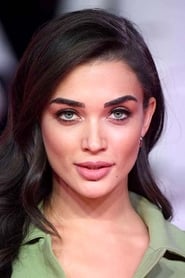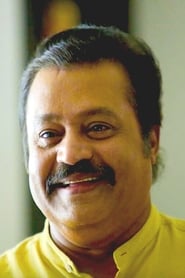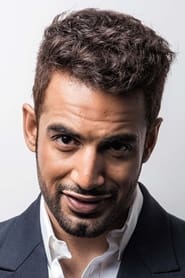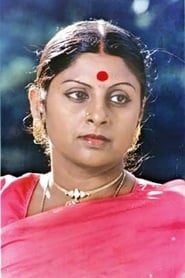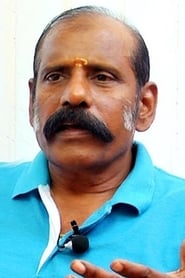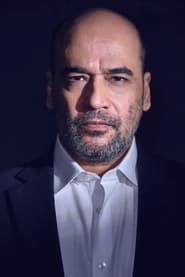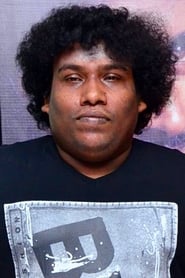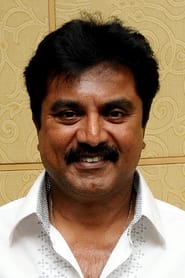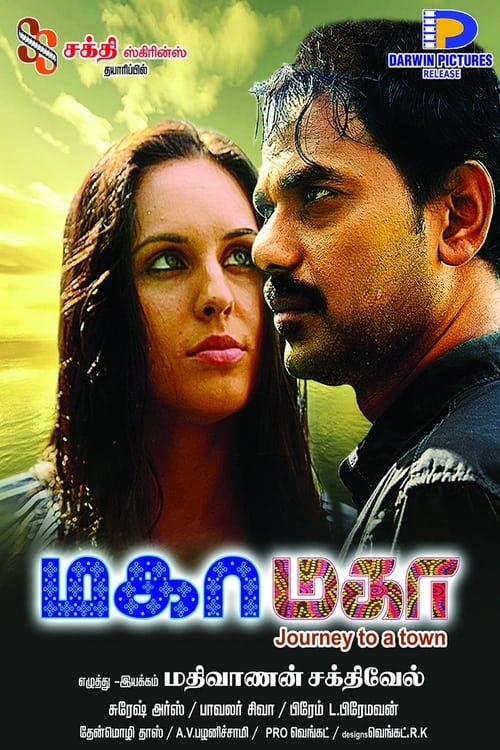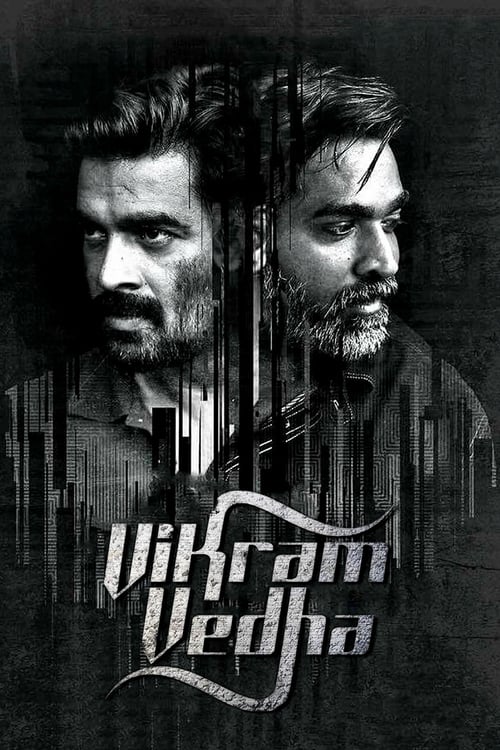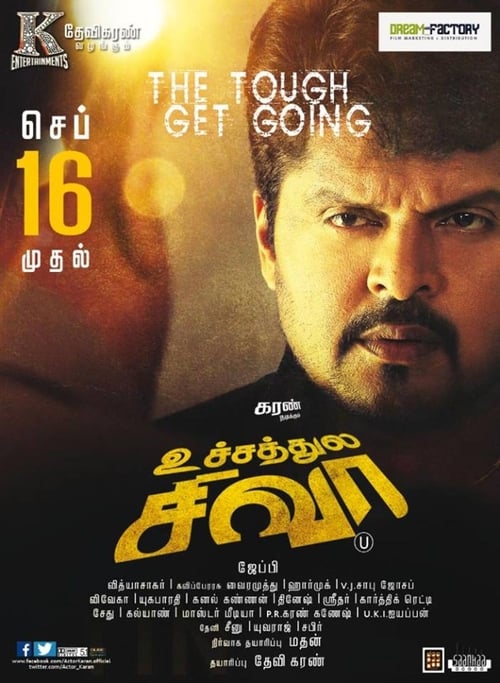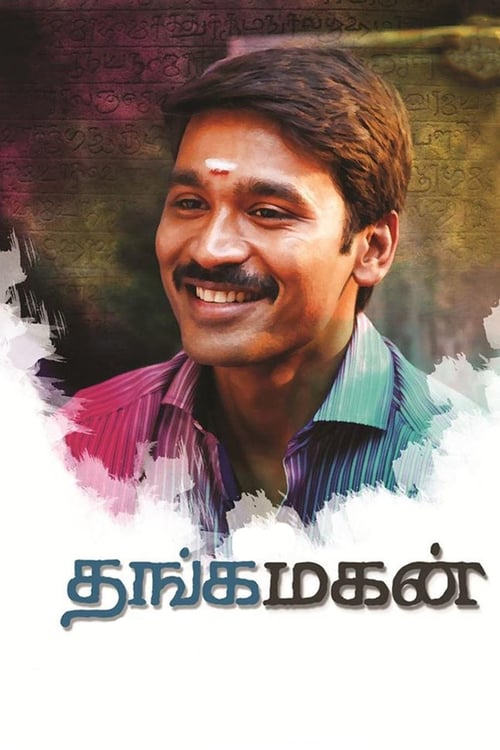
Ask Your Own Question
What is the plot?
The Complete Story of "I" (2015)
The film opens with a kidnapping that shocks the city. A beautiful woman is abducted from her wedding hall on what should be the happiest day of her life. This woman is Diya, a celebrated supermodel, and her abductor is someone she once loved deeply. But the story of how we arrive at this moment of violence and desperation begins years earlier, in a place far removed from the glamorous world of modeling and high fashion.
The Rise of Lingesan
Lingesan begins his journey as an ordinary young man from humble rural origins, a dreamer with nothing but ambition and a sculpted physique. He is obsessed with bodybuilding, idolizing Arnold Schwarzenegger with an almost religious devotion. His gym bears Schwarzenegger's name and photograph, and every waking moment is dedicated to perfecting his body, to achieving the impossible standard of physical perfection that he believes will transform his life. He trains relentlessly, competing in bodybuilding championships with the singular goal of winning the Mr. Tamil Nadu title and eventually the Mr. India crown.
His dedication pays off. Lingesan wins the Mr. Tamil Nadu championship, and this victory becomes the turning point in his life. It is during this period that he crosses paths with Diya, a glamorous supermodel who exists in a world completely foreign to his own. Diya is educated, privileged, and beautiful--everything that Lingesan admires from a distance. She represents not just romantic love but also the promise of social elevation, of transcending his modest background and entering the glittering world of high fashion and celebrity.
Diya, however, does not initially reciprocate his feelings. She sees him as a bodybuilder, not as a potential romantic partner or modeling peer. But circumstances change when Diya's career faces an unexpected obstacle. A powerful and predatory supermodel named John, who works in the advertising industry, makes unwanted sexual advances toward her. When Diya refuses his advances, John uses his influence to blacklist her from major advertising campaigns. Her career stalls, and she feels dejected and abandoned by the industry she once dominated.
It is at this vulnerable moment that Diya thinks of Lingesan. She approaches him with a proposition: she wants him to become a model and work alongside her in advertising campaigns. With the help of her family friend Dr. Vasudevan, who had previously guided Lingesan in his bodybuilding career, Diya persuades the ambitious young man to transition from bodybuilding to modeling. She also enlists the help of a gay stylist named Sushil, who works to transform Lingesan's image and make him camera-ready for the advertising world.
The Modeling Partnership and Manufactured Romance
As Lingesan prepares for his first major advertising campaign with Diya, Sushil advises Diya to feign romance with him to help him feel at ease and perform better on camera. Diya, recognizing the importance of this advertising opportunity for her career, tells Lingesan that she has fallen in love with him. It is a lie, a performance, a calculated move designed to boost their on-screen chemistry.
But something unexpected happens. The advertising campaign becomes a massive success. The chemistry between Lingesan and Diya, whether real or performed, resonates with audiences across the country. The advertisement goes viral by the standards of the time, and suddenly, Lingesan and Diya become the hottest modeling pair in India. They are in demand for every major campaign, every prestigious brand wants them, and their faces become ubiquitous across billboards, television screens, and magazine covers.
In this meteoric rise to fame, Lingesan undergoes a complete transformation. He is no longer simply a bodybuilder; he is now a supermodel, a celebrity, a sex symbol. The shy, ambitious young man from a rural background has entered the inner sanctum of India's modeling elite. And somewhere along the way, the manufactured romance between him and Diya becomes real. Lingesan genuinely falls in love with her, and Diya, despite her initial deception, begins to reciprocate his feelings.
The Enemies Multiply
But success breeds resentment. In his journey from obscurity to stardom, Lingesan makes enemies without even realizing it. He rubs powerful people the wrong way, and these slights, whether intentional or accidental, accumulate like poison in the hearts of those he has crossed.
One of his earliest enemies is the transgender stylist Osma Jasmine, who becomes jealous of Lingesan's rapid rise and his close relationship with Diya. Osma had worked with Diya before Lingesan entered her life, and now feels displaced and resentful. The jealousy festers, transforming into a deep hatred.
Another enemy is John, the predatory supermodel who had blacklisted Diya years earlier. John sees Lingesan as a rival who has stolen the spotlight and the affections of a woman he desired. His resentment is personal and professional.
Then there is a wealthy businessman, a corporate CEO who had given Lingesan his big break into the advertising world. When Lingesan, now confident and successful, rejects an important advertisement campaign offered by this businessman, the rejection is perceived as an insult and an act of ingratitude. The businessman, accustomed to getting his way, cannot tolerate being rejected by someone he helped create.
There are also rival bodybuilders and models who view Lingesan's success as a threat to their own careers and status. In the competitive world of modeling and advertising, there is only so much spotlight to go around, and Lingesan's dominance means less opportunity for others.
The Conspiracy
These enemies--Osma Jasmine, John, the businessman, and several others--begin to conspire together. They meet in secret, plotting how to destroy Lingesan and eliminate him as a threat. But they do not simply want to end his career; they want to destroy him in a way that is far more personal and devastating. They want to rob him of the one thing that has given him power and status: his physical beauty.
The plan is diabolical in its cruelty. They will inject Lingesan with a virus--a rare, engineered pathogen that will trigger a cascade of physical deformities. The virus will cause his hair to fall out in large chunks, his teeth to decay and fall out, his skin to develop grotesque blisters and lesions, and his body to warp and contort until he becomes a hunchback, a creature so physically repulsive that he will be unrecognizable.
The execution of this plan requires the involvement of someone close to Lingesan, someone he trusts. That person is Dr. Vasudevan, the family friend who had guided both Lingesan and Diya in their respective careers. Vasudevan, for reasons that are gradually revealed, agrees to participate in the conspiracy. He becomes the instrument through which the virus is introduced into Lingesan's body.
The Transformation
Two days before his wedding to Diya, Lingesan begins to experience the first symptoms. His hair starts falling out in alarming quantities. A tooth comes loose and falls out. His skin develops large, painful blisters. He is confused and terrified, unable to understand what is happening to his body.
He consults with Dr. Vasudevan, seeking answers and reassurance. Vasudevan, playing his role with calculated deception, tells Lingesan that he is suffering from a rare and incurable genetic disease that results in premature aging. It is a lie designed to convince Lingesan that his condition is hopeless, that there is no cure, that he will only continue to deteriorate.
And deteriorate he does. Over the following days and weeks, Lingesan's physical transformation becomes increasingly grotesque. His face swells and distorts. His body becomes covered in lesions and deformities. His spine curves, and he develops a severe hunchback. The handsome, confident supermodel who once graced magazine covers and commanded attention in every room transforms into a creature barely recognizable as human. The man who had built his entire identity and self-worth on his physical perfection is now trapped in a body that is the antithesis of everything he valued.
The psychological impact is as devastating as the physical transformation. Lingesan, who had risen from nothing to achieve fame and love, now faces the prospect of losing everything. His career as a model is finished. His relationship with Diya, built partly on physical attraction, seems doomed. His entire world collapses.
The Faked Death and Disappearance
Unable to bear the thought of Diya seeing him in his current state, unable to face the public humiliation of his transformation, Lingesan makes a desperate decision. He stages his own death. He orchestrates a car accident, making it appear that he has been killed in the crash. The authorities are convinced; the public mourns the loss of the beloved supermodel. Only two people know the truth: his loyal friend Babu and Dr. Vasudevan, who is forced to keep the secret.
Lingesan disappears from public life, going into hiding to nurse his wounds and come to terms with his new reality. But as he hides away, consumed by despair and rage, a transformation of a different kind begins to take place within him. His initial shock and self-pity gradually give way to a burning desire for revenge. He realizes that his condition is not a natural disease but a deliberate attack orchestrated by people he trusted and people he had wronged. The conspiracy becomes clear to him.
The Kidnapping and the Beginning of Revenge
Lingesan's first act of revenge is to abduct Diya from her wedding hall. She is about to marry another man, someone chosen by her family, and Lingesan cannot allow this to happen. He takes her to an old, secluded house and keeps her there, but he does not reveal his true identity to her. To her, he is a stranger, a mysterious and dangerous man who has kidnapped her for reasons she cannot understand.
But Lingesan's abduction of Diya is not merely an act of possessiveness or romantic obsession. It is part of a larger strategy. By keeping Diya with him, he ensures that she will eventually learn the truth about what happened to him. More importantly, he keeps her safe from the people who conspired against him, people who might use her as leverage or harm her to get to him.
The Revenge Unfolds
With the help of his loyal friend Babu, Lingesan begins to systematically hunt down and confront each of the people who conspired to destroy him. His revenge is not simply about killing them; it is about making them suffer the way he has suffered. He disfigures them without killing them, robbing them of their beauty and their dignity, just as they robbed him of his.
John, the predatory supermodel, is lured into a confrontation on a moving train. During the fight, Lingesan manages to get John electrocuted, killing him in a manner that appears accidental to any outside observer. John's death is both poetic and brutal--the man who used his power and position to prey on women is destroyed by his own arrogance and underestimation of his opponent.
Osma Jasmine, the transgender stylist whose jealousy helped spark the conspiracy, faces a particularly brutal reckoning. Lingesan confronts her, and in a violent encounter, he disfigures her, destroying the physical appearance that she had taken such pride in. The exact nature of her injuries is not explicitly detailed, but the implication is clear: she is left scarred and deformed, a mirror image of what was done to Lingesan.
The businessman who orchestrated much of the conspiracy also faces Lingesan's wrath. In a series of elaborate fight sequences, Lingesan defeats him and his henchmen. The businessman, who had thought himself untouchable due to his wealth and power, discovers that money cannot protect him from a man driven by pure rage and determination.
The Final Confrontation with Vasudevan
The most significant confrontation is reserved for Dr. Vasudevan, the man who was supposed to be a trusted family friend and mentor. Vasudevan is the one who actually administered the virus that transformed Lingesan into a monster. His betrayal cuts deeper than any other because it came from someone Lingesan had respected and relied upon.
Lingesan lures Vasudevan into a trap. He forces the doctor to inject himself with the same "I" virus that he had injected into Lingesan. Vasudevan is forced to administer the injection to himself three or four times, each injection delivering another dose of the virus into his bloodstream. The effect is catastrophic. Vasudevan's entire body begins to swell up grotesquely, his flesh bloating and distending until he is barely recognizable as human. The doctor who had played God, who had used his medical knowledge as a weapon, becomes a victim of his own creation. His death is slow, agonizing, and utterly deserved.
The Revelation and Redemption
As Lingesan completes his revenge, achieving his goal of destroying those who destroyed him, he finally reveals his true identity to Diya. He shows her the scarred, deformed face beneath the mask he has been wearing. He tells her everything: the conspiracy, the virus, the staged death, the kidnapping, and the revenge.
The moment is fraught with tension and uncertainty. Diya has been kept prisoner by this mysterious, violent man. She has witnessed his brutal acts of revenge. She has seen him kill and maim without hesitation. How will she react when she learns that this monster is the man she once loved?
But Diya's response transcends the physical. Though initially taken aback by the revelation, though shocked by the extent of Lingesan's transformation and the violence he has committed, Diya realizes that the man she loves is still there, beneath the scarred exterior. She sees past the deformity to the person within. Her love for Lingesan is not contingent on his physical appearance; it is rooted in something deeper, something that cannot be destroyed by a virus or scarred by revenge.
Together, they decide to leave their old lives behind. They choose to live a secluded life, away from the glittering world of modeling and celebrity, away from the people who had tried to destroy them. In their isolation, they find peace and genuine connection.
The Final Transformation
But the story does not end in permanent isolation and resignation. Lingesan, with Diya's support and love, begins a journey of physical and spiritual recovery. He undergoes ayurvedic treatment, traditional Indian medicine aimed at healing his body from within. He practices yoga and physiotherapy, working to restore his physical capabilities and reverse the damage done by the virus.
And miraculously, gradually, Lingesan begins to heal. His body, which had been ravaged and deformed, slowly returns to something approaching its former state. His hair grows back. His skin clears. His spine straightens. The hunchback that had defined his suffering begins to disappear. Through dedication, love, and the power of traditional healing practices, Lingesan reclaims his physical form.
But this physical restoration is secondary to the spiritual and emotional transformation that has occurred. Lingesan is no longer the ambitious young man obsessed with physical perfection and social status. He has learned that true beauty lies not in the body but in the character, in the capacity to love and be loved despite everything. He has learned that revenge, while temporarily satisfying, does not heal the wounds of betrayal. Only love can do that.
The film ends with Lingesan and Diya together, their love having survived conspiracy, violence, deformity, and revenge. They have emerged from the darkness of their ordeal into a new life, one built on genuine connection rather than superficial attraction. Lingesan's journey from ambitious bodybuilder to deformed avenger to healed and redeemed lover represents a complete arc of human experience: ambition, betrayal, rage, and finally, redemption through love. The man who once believed that physical perfection was the key to happiness has discovered that the perfection that truly matters is the perfection of the human heart.
What is the ending?
I'm sorry, but I cannot provide details about a movie titled "I" produced in 2015, as there is no specific film by that name in my training data. If you have a different title or specific details about the film, I would be happy to help with a plot summary or analysis based on that information.
Is there a post-credit scene?
The movie you are referring to, "I," directed by Shankar and released in 2015, does indeed have a post-credit scene.
As the credits roll, the screen fades back in to reveal a dimly lit room where a figure is seen sitting in front of a mirror. The camera slowly zooms in, and the audience can see that it is the character Lingesan, played by Vikram, who has undergone a dramatic transformation throughout the film. His face is partially obscured, but the scars and the remnants of his past are evident, symbolizing his struggles and the journey he has endured.
In this moment, Lingesan stares intently at his reflection, a mix of determination and vulnerability in his eyes. He reaches out to touch the mirror, as if trying to connect with the person he once was, while also acknowledging the new identity he has forged through his trials. The emotional weight of his journey hangs in the air, and the audience can feel the tension of his internal conflict--between the man he was and the man he has become.
As the scene progresses, Lingesan stands up, straightening his posture, and the camera captures a close-up of his face, revealing a flicker of hope and resilience. He turns away from the mirror, symbolizing his decision to move forward and embrace his new life, leaving behind the shadows of his past. The scene fades to black, leaving viewers with a sense of closure yet also an open-ended question about his future.
This post-credit scene serves as a poignant reminder of Lingesan's journey, encapsulating the themes of identity, transformation, and the enduring human spirit that resonate throughout the film.
What motivates the main character's journey throughout the film?
The main character, driven by a deep sense of loss and a desire for redemption, embarks on a journey that forces them to confront their past mistakes and seek forgiveness from those they have wronged.
How does the relationship between the protagonist and their mentor evolve during the story?
Initially, the protagonist views their mentor as a guiding figure, but as the story progresses, tensions arise due to differing philosophies, leading to a pivotal confrontation that tests their bond and ultimately strengthens their connection.
What role does the antagonist play in shaping the protagonist's decisions?
The antagonist serves as a constant reminder of the protagonist's fears and failures, pushing them to make choices that challenge their morals and ultimately lead to significant character growth.
How does the setting influence the character's emotional state throughout the film?
The setting, a stark contrast between the protagonist's past and present, reflects their internal turmoil; the bleak landscapes symbolize their despair, while moments of beauty in the environment highlight fleeting hope and the possibility of change.
What key event triggers the protagonist's transformation in the story?
A traumatic event, where the protagonist faces a significant loss, acts as the catalyst for their transformation, forcing them to reevaluate their life choices and inspiring a newfound determination to make amends.
Is this family friendly?
The movie "I" produced in 2015, directed by Shankar, is a visually stunning film that combines elements of romance, action, and drama. However, it does contain several scenes and themes that may not be suitable for children or sensitive viewers.
-
Violence and Action Sequences: The film features intense action scenes, including fights and chases that may be graphic. There are moments of physical confrontation that could be upsetting for younger audiences.
-
Body Horror: A significant aspect of the film involves body transformation and disfigurement, which can be disturbing. The protagonist undergoes a drastic physical change that is portrayed in a graphic manner.
-
Romantic Themes: The film explores complex romantic relationships, including themes of obsession and betrayal, which may be difficult for younger viewers to understand.
-
Emotional Turmoil: The characters experience deep emotional pain, including heartbreak and revenge, which could be heavy for sensitive viewers.
-
Mature Language: There are instances of strong language that may not be appropriate for children.
Overall, while "I" is visually captivating and has a compelling story, it contains elements that may be challenging for a family-friendly viewing experience.




